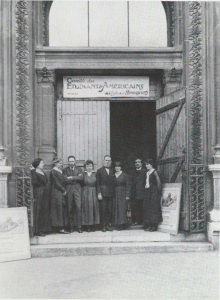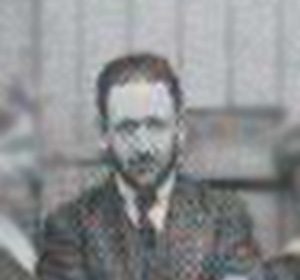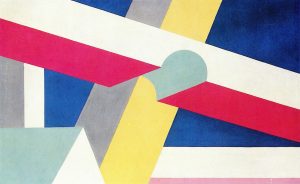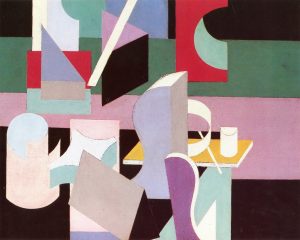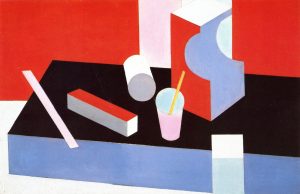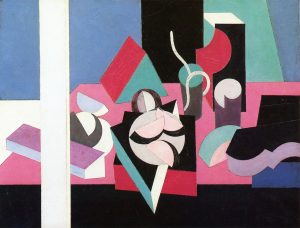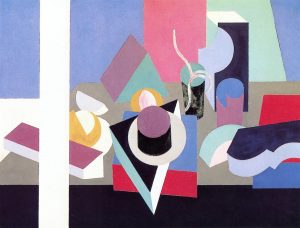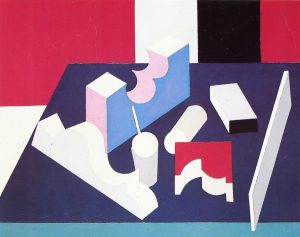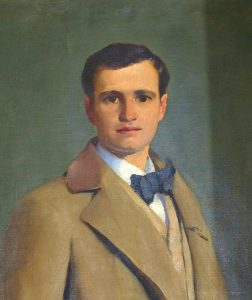The artist was born on March 25, 1881 in Campbell County, Virginia, USA.
1881 - 1936
Patrick Henry Bruce
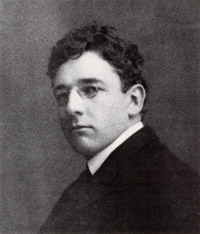
description
American artist, one of the first Cubists in the United States.
He was the second of four children of a famous American lawyer and speaker, and a former planter. Relatives of the artist were large landowners, but lost most of the plantations after the Civil War.
Working primarily in France, Patrick Bruce invented an original abstract technique based on the achievements of Henri Matisse, Francis Picabia and the Delaunay couple. A regular participant of the “Autumn Salon”, “Salon of Independent” and other influential exhibitions in Europe, he was well known in the circles of the creative intellectuals of Paris. However, despite the artist’s participation in the famous American Armory Exhibition in 1913, his work remained almost unnoticed in his homeland. This led to the fact that Bruce, being very self-critical, destroyed most of his works in a fit of despair and committed suicide in a hotel in New York a few years later. No more than a hundred of his works were preserved. They attest to his original approach to painting and outstanding talent. They are in the best museums in the USA.
The most famous author’s works are a series of geometric still lifes called “Painting” or “Forms”, created in the 1920s. In these paintings, various elements overlap and join at different angles, which creates an illusory space on the flat surface of the canvas and opens several points of view at the same time.
Key ideas:
– Most of Bruce’s works are strict geometric compositions made in an unusual color scheme.
– The artist preferred to work with still lifes, which he portrayed extremely rationally and even drily. A variety of fruits, a glass with a straw, kitchenware are presented on Bruce’s canvases in the form of perfect, incredibly simplified forms.
– There is a strict order and visual harmony in all the pictures by the American author. Block structures of Bruce’s paintings create monumental architectural volumes, accentuated by rhythmic lines and color contrasts.
– The harmonious compositions of the artist create an impression of silence and tranquility. In contrast to the still lifes of Picasso and Braque, there is no division into individual small fragments in Bruce’s works, but there is rather, on the contrary, the unification of disparate planes into one.
– A distinguishing feature of the artist’s work is the visible carcass of geometric figures, which he drew with a pencil before applying paints. In many canvases, the artist intentionally leaves these areas completely or partially unpainted, and the rest are filled with a dense, uniform color. This technique enhances the volume effect and perspective in the picture, and also helps avoid the visual congestion of the composition.
– The color scale used in his work amazes with unusual combinations of pastel blue, turquoise and lilac, harmoniously intertwined in rational Cubist language. Patrick Bruce’s paintings are a vivid example of the artist’s individual approach to the existing artistic trends and their non-standard interpretation.
1881
1898
1902
1907
1912
1916
1920
1930
1936
The birth of the artist
He began to study fine arts in the Art Club of Richmond
He began to study fine arts in the Art Club of Richmond. Working in the real estate office in the daytime, he attended evening classes at the studio of the club, where he studied fine arts and painting. The earliest survived works date back to 1900.
He moved to New York and enrolled in the New York School of Arts
He moved to New York and enrolled in the New York School of Arts, became a student of such famous masters as W. M. Chase and R. Henry. After two years of study, he went to Paris, where he practically lived until 1933. In the capital of France, the artist got acquainted with the works of Renoir, Cezanne and Picasso, which had a huge impact on him. Bruce became friends with many young avant-garde artists, poets and art dealers.
He demonstrated his works at the Salon d'Automne in Paris for the first time
He demonstrated his works at the Salon d’Automne in Paris for the first time. The presented paintings indicate a dramatic change in the style of the artist, which had become more modern and dynamic. Next year Bruce met Matisse and became his follower in painting. He enrolled in Matisse’s private school and resided in his house with his wife Helen Kibbury for some time. During this period the artist wrote a large series of still lifes, in which the influence of Fauvism and Cubism is evident.
Got acquainted with Robert and Sonya Delaunay
Got acquainted with Robert and Sonya Delaunay, the founders of Orphism. This colorful and vivid art movement captivated the artist. He painted pictures in a similar technique. In 1913, Bruce took part in the famous “Weapon Show” in the United States, which was of key importance for the development of modern American painting. Despite the fact that the artist’s work was one of the most vivid and innovative, his paintings did not get a large number of fans in America, and the artist remained unknown in his homeland.
The individual style of the artist was finally formed
The individual style of the artist was finally formed. During this period, the artist painted a series of major works, which he called “Compositions”, and assigned numbers to them. In 1917 he participated in the exhibition of the Society of Independent Artists in New York.
"Forms"
Worked on a series of still lifes called “Forms.” Many art historians call these works, the style of which is very original, the top of the artist’s work. Bruce kept on taking part in art exhibitions in Paris, Berlin and New York, including the exhibition “Art Today” in 1925.
Moved to the United States
Moved to the United States, where he had been painting at the Barnes Foundation School of Art in Pennsylvania for several years. During this period, the artist experienced a deep creative and personal crisis. His work was not sold and he divorced his wife. In 1933 Bruce destroyed a large number of his paintings, sending only about 15 paintings to his friend Rocher in Paris. Having depression, the artist committed suicide on November 12, 1936 in New York.
The death of the artist
Patrick Henry Bruce passed away on November 12, 1936 in New York, USA.
Patrick Henry Bruce
On Artist
flow
Post-Impressionism
friends
Sonya Delone
Robert Delone
Marcel Duchamp
Man Ray
Francis Picabia
Pablo Picasso
artists
William Merritt Chase
Robert Henry
Kenneth Miller
Paul Cezanne
Auguste Renoir
Henri Matisse
By Artist
flow
Cubism
Abstract art
Abstract expressionism
friends
Max Weber
Morgan Russell
Morton Shamberg
Andrew Dasburg

